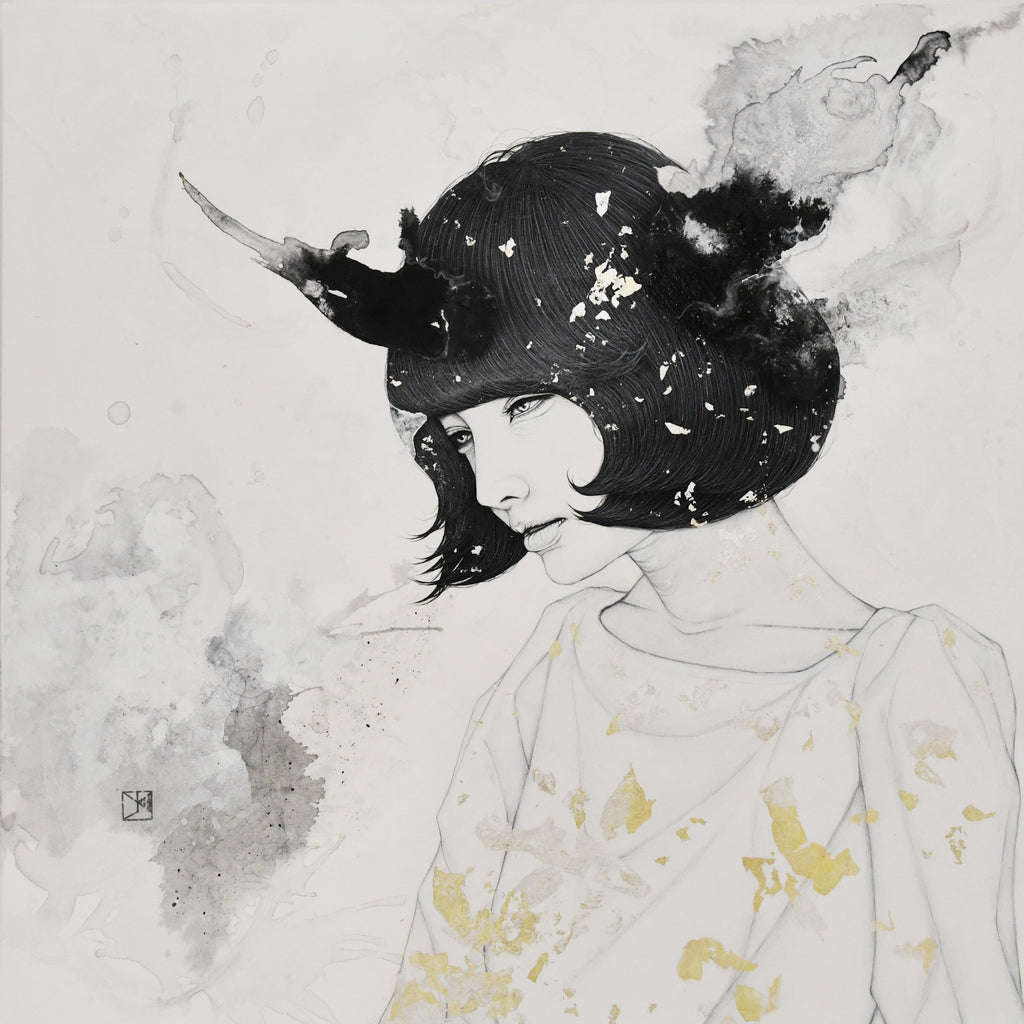ARTICLES
Yu Kawashima × Meiji Hijikata | Exploring the Depths of Young Women's Melancholy in Line Paintings
2024.02.22
INTERVIEW

Meiji Hijikata × Yu Kawashima
This series of articles presents dialogues between different artists and Meiji Hijikata, Director of the Taro Okamoto Museum of Art, Kawasaki, offering an in-depth exploration of their artworks. The fourth installment delves into a conversation with Yu Kawashima, an artist known for effortlessly navigating the diverse domains of Nihonga (traditional Japanese painting) and contemporary art.
In the previous segment of their discussion, Kawashima discussed his introduction to Nihonga during his university studies and his decision to focus on sumi ink as his primary artistic medium. This section further explores their dialogue surrounding the theme of "anxiety" as the core motif in Kawashima's pieces and his frequent depiction of young women as the central figures in his artwork.
The Underlying “Anxiety” in Kawashima’s Works
Hijikata: Since your graduation project up to now, your works have constantly delved into the “anxiety lurking inside people”. Can you tell me more about this theme?
Kawashima: Anxiety pervades the world, and I'm keenly aware of a personal anxiety that often surfaces in my paintings. I frequently reference my "inner self", and upon completing my painting for the FACE exhibition, I delved into its meaning. I came to the realization that my inner self is deeply rooted in "anxiety". This sense of unease can sometimes lead to feelings of loneliness or isolation. I find that during such times, my emotions and sense of instability significantly impact my artistic expression.
Hijikata: It appears that you view painting as a natural and essential part of your being. While I may not fully comprehend your inner self or the anxieties you carry, I believe there's something inherently relatable in your experiences. For you, translating those feelings into artistic expressions through painting serves as a methodical journey of self-examination, one brushstroke at a time.
Fragility and Strength – The Duplexity of the Girl in the Painting

Yu Kawashima during the dialogue, with his painting "Ghost" in the background. 2023, 65.2 × 65.2 cm, Silver leaf, mineral pigments, ink on hemp paper
Hijikata: The most important motif of your paintings are young women, but there was one time when I was looking at your works that I saw her as a portrait of yourself. Why did you decide to focus on this motif?
Kawashima: For my graduation project during my fourth year of undergraduate studies, I chose to create a self-portrait as the central motif. My aim was to capture a symbiotic relationship between my inner emotions and the external world. However, I found that my ego dominated the painting, resulting in a direct and somewhat monotonous expression.
The depiction of the female form as a conduit of emotion dates back to antiquity. My decision to paint young women stemmed from the notion of embodying my inner emotions through a feminine representation. While young women are often perceived as vulnerable, their portrayal doesn't equate to weakness. I ruminated on this and the significance of portraying their existence. As I was already in my twenties, portraying my inner self as an adolescent girl felt like it would create a dissonance.
Hijikata: By imbalance, do you mean "instability"?
Kawashima: Yes. I often portray the girl with a juxtaposition of childlike innocence and adult wisdom, or as a seemingly strong but secretly vulnerable figure. Through these depictions, the girl I paint has evolved into a reflection of my own inner complexities. She serves as a conduit for expressing emotions and experiences that resonate with my own journey.

Yu Kawashima's graduation work 《Something that pollutes every situation, something that purifies every situation》 2013, 227.6 × 182.2 cm, Silver leaf, silver paint, processed copper powder, mineral pigments, ink on Kumohada hemp paper.
Yu Kawashima 《-emon -Remind-》 2023, 65.2 × 65.2 cm, Silver leaf, mineral pigments, ink on hemp paper
Revealing the Artist's Inner Depths Through a Young Girl’s Visage

Meiji Hijikata during the dialogue, with Yu Kawashima's painting "-Evil- Remind " in the background. 2023, 65.3 × 65.3 cm, Silver leaf, mineral pigments, ink on hemp paper
Hijikata: The girl appears almost anonymous, as if veiled by a mask of anonymity. Do you typically work with models when painting?
Kawashima: I work with models for posing and as references for human anatomy. Specifically, I work with three different models, blending their features to create a singular figure. When working with only two models, I often find myself favoring one over the other. However, with three models, I can more effectively capture my desired style. This amalgamation of three individuals imbues each painting with my distinctive aesthetic, which may explain their similar appearance.
Hijikata: Do you mean that you are detatching her from the identity of any specific person?
Kawashima: Yes.
Hijikata: Do you also replicate the model’s facial features, or do you rely on your imagination?
Kawashima: I incorporate the model’s facial features primarily as a reference for the arrangement and balance of facial features with the body, but the depiction is largely based on my imagination. The expression of the girl's face is where I express my personal style most vividly.
Kawashima's Vision of the Future for Nihonga

Meiji Hijikata × Yu Kawashima
Hijikata: I know you have a deep connection with Nihonga, but what does Nihonga actually mean to you?
Kawashima: In the past, various theories have emerged regarding the decline of Nihonga, but I believe that each artist will offer their own perspective on its future. Personally, I aspire to embody Nihonga itself. As I showcase my works within the realm of contemporary art, I envision being acknowledged as synonymous with Nihonga. Therefore, I am committed to evolving my art while staying true to my unique vision, skills, and convictions.
Hijikata: Your works captivate through the exquisite Nihonga mineral pigments and sumi ink, alongside the ineffable allure of your lines. Western painting often emphasizes surface expressions, whereas traditional Japanese art accentuates the beauty of lines. The mastery of line work is pivotal, as misinterpretation could lead Western observers to view it merely as decorative design.
Your ability to integrate contemporary design elements and illustration styles into traditional Nihonga paintings sets you apart, ensuring Nihonga's relevance in contemporary art. Your profound understanding of Nihonga techniques and materials further enhances the originality and distinctiveness of your creations.
Kawashima: Thank you. For me, the materiality in Nihonga holds immense significance. While I hold great respect for my predecessors, I also believe that the Nihonga concept I've cultivated can take on various forms and textures within my artworks.
Continuously Pursuing New Expressions
"Yu Kawashima: PATHOS" exhibition at the Whitestone Gallery Seoul
Hijikata: Tell me about your plans for the future.
Kawashima: In my solo exhibition in Seoul in January 2024, I experimented with a new direction, incorporating the ‘devil’ motif into my paintings. Drawing inspiration from the archetype of the femme fatale, I explored diverse themes and sought innovative ways to expand upon them. At times, I intentionally subverted the image of the girl I depicted. Looking ahead, I'm eager to continue challenging myself and exploring fresh avenues of artistic expression.

Yu Kawashima
As their conversation neared its end, Kawashima expressed, "I believe painting is what gives me a sense of vitality. In essence, creating art is my means of expressing my desire to thrive. Therefore, regardless of the challenges that may arise, I am dedicated to a life of painting and continual artistic creation."
In navigating existence alongside his female subjects, Yu Kawashima embraces the somber realities of our world, acknowledging the inherent complexities and anxieties that permeate our lives. With his paintbrush as his guide, he embarks on a journey through the canvas, seeking to articulate the nuances of human experience and emotion. Despite the challenges and uncertainties that confront him, Kawashima remains steadfast in his commitment to his art as he invites viewers to contemplate the complexities of existence and find solace in the beauty and resilience of the human spirit.
ARTIST
RELATED ARTICLES
-
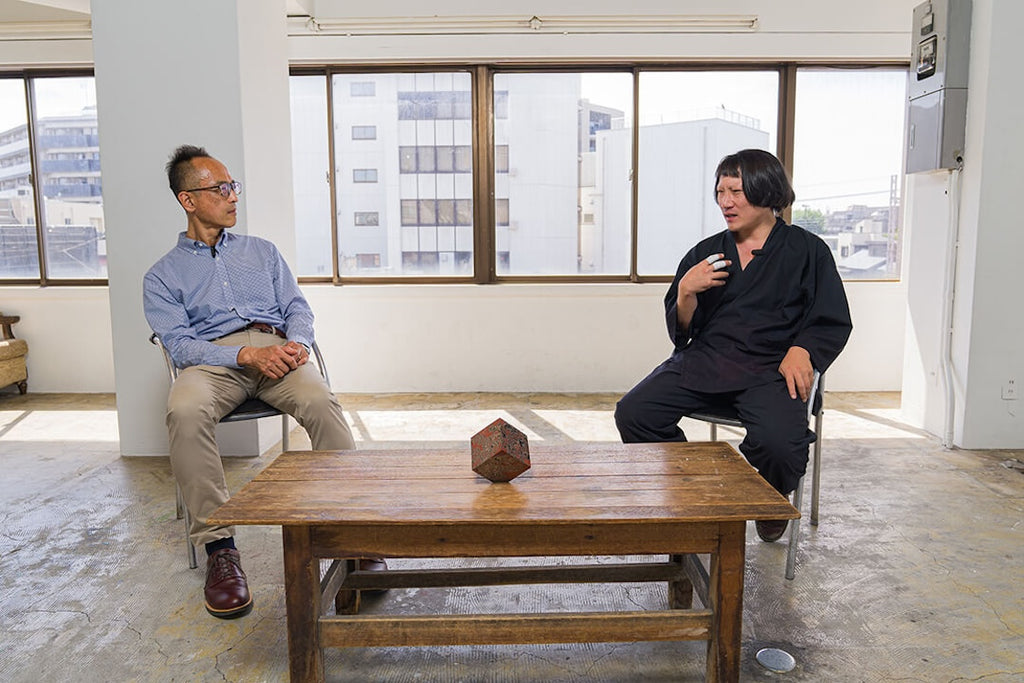
Madara Manji × Meiji Hijikata|The Fusion of Evolving Traditions and Contemporary Art
2024.07.12
INTERVIEW -
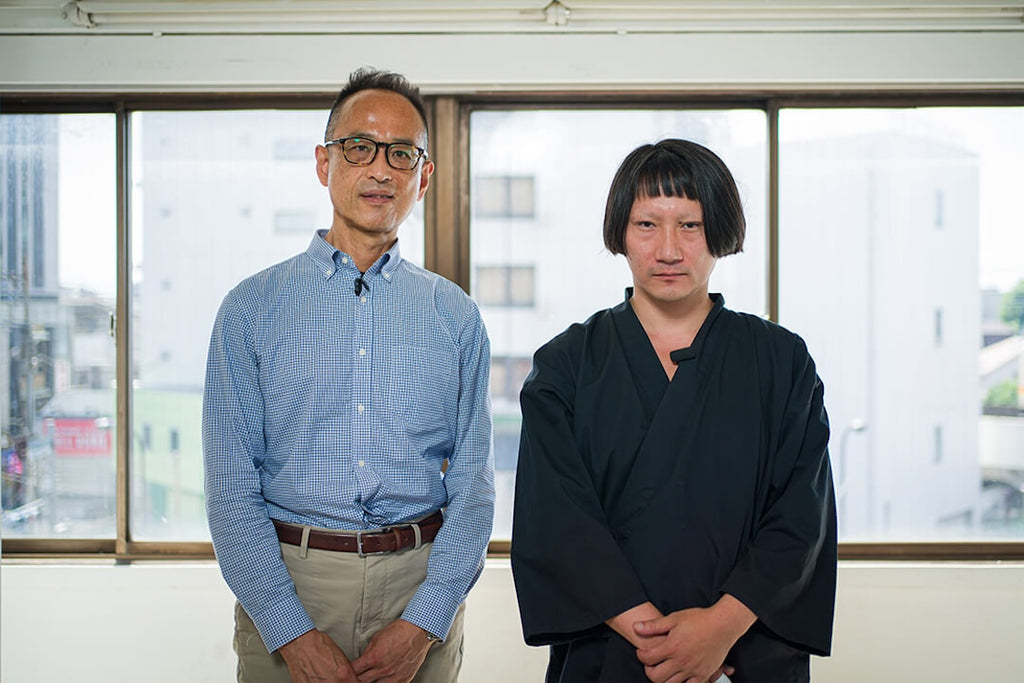
MADARA MANJI × Meiji Hijikata| Forging Humanity with Fire and Metal
2024.07.05
INTERVIEW -
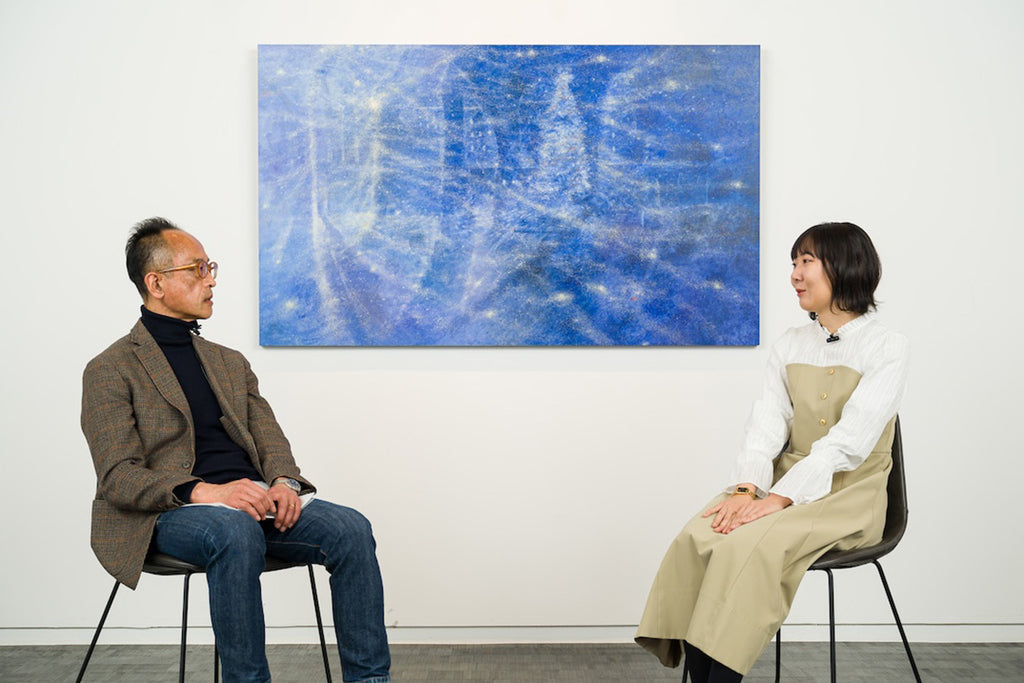
Karen Shiozawa × Meiji Hijikata | Dreamlike Brushstrokes that Evoke Empathy
2024.05.10
INTERVIEW -
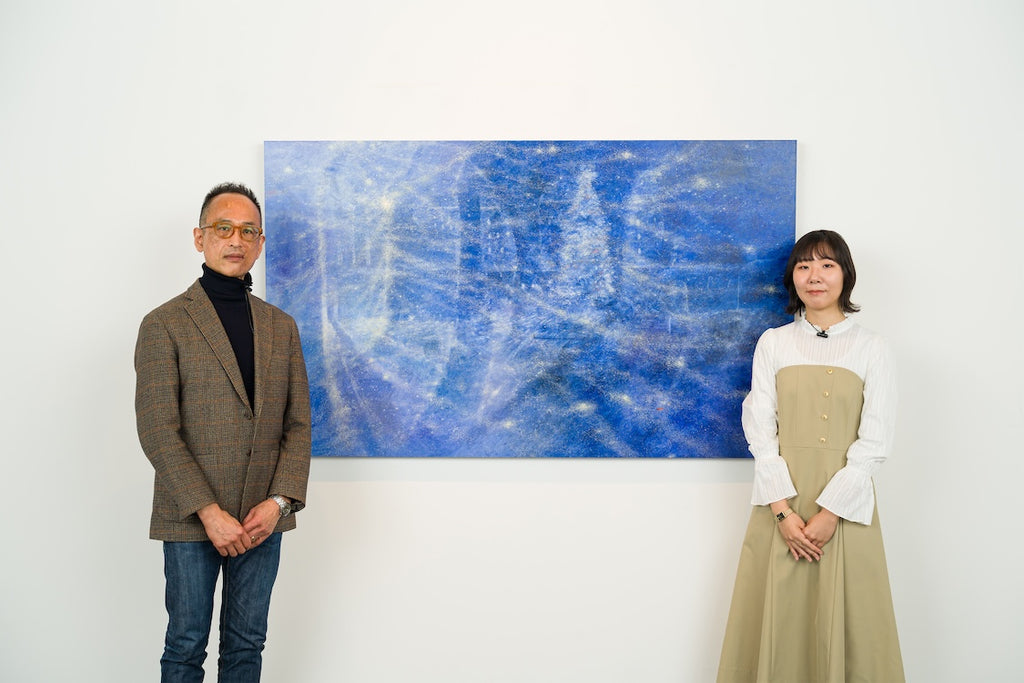
Karen Shiozawa × Meiji Hijikata | The Depths of the Heart Projected by a Magical Light
2024.05.07
INTERVIEW

